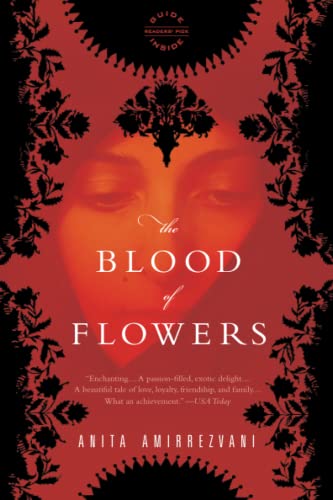
Review of *The Blood of Flowers* by Anita Amirrezvani
Anita Amirrezvani’s *The Blood of Flowers* immerses readers in 17th-century Persia, a time marked by artistic and cultural richness. Through the eyes of the young protagonist, whose life takes a dramatic turn due to her changing circumstances, Amirrezvani crafts an emotional narrative about resilience, creativity, and the quest for identity within the boundaries imposed by society.
Storyline
The narrative follows the unnamed protagonist and her mother after the death of her father, forcing them to leave their rural home for the vibrant city of Isfahan. This transition highlights the struggles of women in a patriarchal society as the protagonist seeks to pursue her passion for carpet weaving. The artistry inherent in this craft serves as a metaphor for her life, representing her journey to reclaim her agency in a world that seeks to limit her potential.
The plot is punctuated by a series of challenges, including poverty, familial duties, and societal expectations that threaten her aspirations. Despite these obstacles, the protagonist’s determination shines through as she masters her craft, ultimately carving out a place for herself amid oppression. The tension between tradition and personal ambition forms the backbone of a story that is both engaging and thought-provoking.
Characters
Amirrezvani’s characters are intricately developed, each contributing significantly to the narrative. The protagonist stands out as fiercely independent and relatable, embodying the struggles of women striving for more in rigid social confines. Her mother, practical and occasionally stern, represents the generational conflict regarding independence and the roles women are expected to fulfill.
Supporting characters, such as the enigmatic uncle and a suitor who personifies societal expectations, further enrich the story. Each character reflects the protagonist’s ambitions and desires, allowing readers to delve into the complexities of human relationships against the backdrop of cultural constraints.
Notably, the development of secondary characters is commendable. The uncle’s initial role as a benefactor evolves throughout the story, illustrating how familial power dynamics can shift unexpectedly. This complexity deepens the narrative, creating a rich tapestry of interpersonal relationships.
Themes
A central theme in *The Blood of Flowers* is the exploration of female empowerment. Amirrezvani skillfully examines what it means to be a woman in a society that often undermines female potential. Through the protagonist’s journey, readers witness the ongoing struggle for self-identity and autonomy. The art of carpet weaving becomes symbolic of her desires and challenges; each knot and thread represents the intricate nature of her life.
Another significant theme is the intersection of art and survival. The protagonist’s mastery of carpet weaving serves not only as a means of livelihood but also as a form of defiance against societal restraints. Amirrezvani highlights the transformative power of creativity as a navigation tool through a male-dominated world.
Additionally, the novel presents a nuanced view of family and community. The protagonist’s relationships with her mother and uncle underscore the complexities of familial love and obligation. The loyalty and sacrifices exhibited by the characters reflect the societal pressure to conform, even when personal desires clash with communal expectations.
Writing Style
Amirrezvani’s writing style is poetic and evocative, vividly bringing the lush landscapes of Persia to life. Her use of rich imagery immerses readers in the vibrant world of 17th-century Isfahan. The sensory details—from the colors of the carpets to the hustle and bustle of the bazaar—create an almost tangible reading experience.
The prose flows seamlessly between narrative and descriptive passages, lending a lyrical quality to the storytelling. Amirrezvani’s ability to weave cultural elements into the narrative enhances authenticity. Incorporating Persian folklore and poetry adds layers to the protagonist’s journey, deepening the reader’s understanding of the cultural context.
Moreover, the dialogue is authentic, reflecting the time’s societal norms and expectations. Each character boasts a distinct voice, enriching the overall narrative.
Critical Analysis
*The Blood of Flowers* is not merely a tale of personal triumph; it also serves as a reflection on broader societal issues that remain relevant today. Amirrezvani challenges readers to consider the implications of gender roles, cultural identity, and the definition of success. The protagonist’s journey becomes a microcosm of the struggles faced by women throughout history, underscoring the ongoing fight for equality and recognition in a world that often marginalizes their contributions.
While the novel is abundant in rich detail and emotion, some critics have argued that certain sections may suffer from pacing issues. The intricate descriptions, though beautifully rendered, can occasionally overshadow the narrative momentum. However, this stylistic choice might be intentional, mirroring the protagonist’s gradual awakening and the slow, methodical process of self-discovery.
Conclusion
In summary, *The Blood of Flowers* by Anita Amirrezvani stands as a masterful exploration of identity, art, and resilience. Through a captivating storyline and well-drawn characters, Amirrezvani invites readers to reflect on the complexities of feminist struggles within a historical context. Her lyrical prose and rich imagery transport us to a world where creativity and determination intertwine, transforming this novel into a universal story of empowerment and self-discovery. It is a remarkable contribution to contemporary literature, resonating with anyone who has ever faced societal constraints in pursuit of their dreams.






